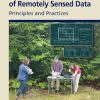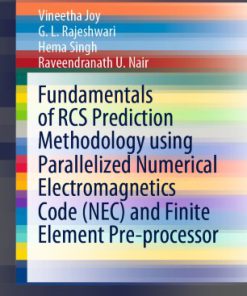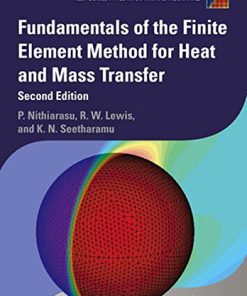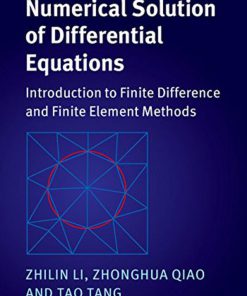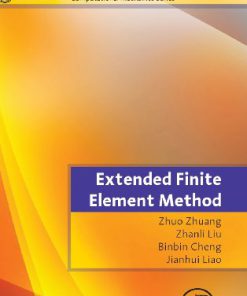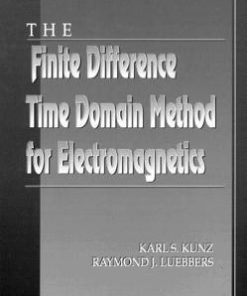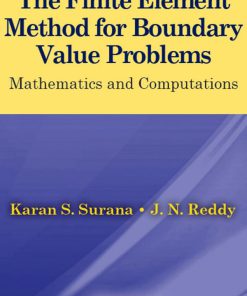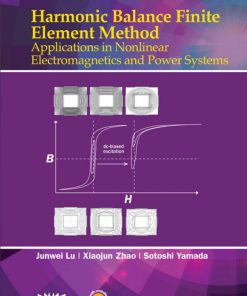Electromagnetics through the Finite Element Method A Simplified Approach Using Maxwell Equations 1st Edition by Jose Roberto Cardoso ISBN 1498783570 9781498783576
$50.00 Original price was: $50.00.$25.00Current price is: $25.00.
Electromagnetics through the Finite Element Method A Simplified Approach Using Maxwell Equations 1st Edition by José Roberto Cardoso – Ebook PDF Instant Download/Delivery: 1498783570, 9781498783576
Full download Electromagnetics through the Finite Element Method A Simplified Approach Using Maxwell Equations 1st Edition after payment

Product details:
ISBN 10: 1498783570
ISBN 13: 9781498783576
Author: José Roberto Cardoso
Shelving Guide: Electrical Engineering Since the 1980s more than 100 books on the finite element method have been published, making this numerical method the most popular. The features of the finite element method gained worldwide popularity due to its flexibility for simulating not only any kind of physical phenomenon described by a set of differential equations, but also for the possibility of simulating non-linearity and time-dependent studies. Although a number of high-quality books cover all subjects in engineering problems, none of them seem to make this method simpler and easier to understand. This book was written with the goal of simplifying the mathematics of the finite element method for electromagnetic students and professionals relying on the finite element method for solving design problems. Filling a gap in existing literature that often uses complex mathematical formulas, Electromagnetics through the Finite Element Method presents a new mathematical approach based on only direct integration of Maxwell’s equation. This book makes an original, scholarly contribution to our current understanding of this important numerical method.
Electromagnetics through the Finite Element Method A Simplified Approach Using Maxwell Equations 1st Table of contents:
Chapter 1 Steps for Finite Element Method
1.1 Introduction
1.2 Steps for Finite Element Method
1.2.1 Step 1: 2D versus 3D
1.2.2 Step 2: Definition of the Domain
1.2.3 Step 3: Selection of the Type of Element and Discretization
1.2.4 Step 4: Selection of the Interpolator Function
1.2.5 Step 5: Selection of the Type of Study
1.2.6 Step 6: Introduction of the Boundary Conditions
1.2.7 Step 7: Solution of the Equation System
1.2.8 Step 8: Exploration of Results—Postprocessing
Chapter 2 Fundamentals of Electromagnetism
2.1 Sources of Electromagnetic Field
2.1.1 Volumetric Distribution of Electric Charges
2.1.2 Superficial Distribution of Electric Charges
2.1.3 Linear Distribution of Electric Charges
2.1.4 Discrete Electric Charges
2.1.5 Current Density Vector
2.1.6 Current Superficial Density Vector
2.2 Field Vectors
2.2.1 The Electric Field Vector
2.2.2 The Magnetic Field Vector
2.2.3 Displacement Vector
2.2.4 Magnetic Field Intensity Vector
2.2.5 The Electric Polarization Vector
2.2.6 The Magnetization Vector
2.3 Quantities Associated with Field Vectors
2.3.1 Voltage between Two Points
2.3.2 Magnetic Flux
2.3.3 Concatenated Magnetic Flux
2.3.4 Electromotive Force
2.3.4.1 History
2.3.5 Magnetomotive Force
2.4 Constitutive Relations
Chapter 3 Maxwell’s Equations
3.1 Introduction
3.2 Maxwell’s First Equation
3.2.1 The Curl of a Vector Field
3.3 Maxwell’s Second Equation
3.3.1 The Displacement Current
3.3.2 Total Current Crossing a Surface
3.4 Maxwell’s Third Equation
3.4.1 Divergence of a Vector Field
3.4.2 Gauss’s or Divergence One’s Theorem
3.5 Maxwell’s Fourth Equation
3.6 The Continuity Equation
3.7 Where Are We?
3.8 A Little Bit of History
3.8.1 Stationary Regime
3.8.2 Quasi-Static Regime
3.8.3 Complex Representation of Sinusoidal Quantities
3.8.4 Magnetodynamics
3.8.5 Fast Time-Dependent Electromagnetic Fields
3.9 Boundary Conditions
3.9.1 Normal Components of B and H
3.9.2 Normal Components of D and E
3.9.3 Normal Components of J
3.9.4 Tangential Components of H
3.9.5 Tangential Components of E
3.9.6 Tangential Components of J
3.10 Electromagnetism Potentials
3.10.1 The Scalar Electric Potential—V
3.10.2 The Scalar Magnetic Potential—ψ
3.10.3 The Magnetic Potential Vector—A
3.10.4 The Electric Potential Vector
3.10.5 Potentials in Time-Dependent Fields
Chapter 4 Finite Element Method in Static, Electric, and Magnetic Fields
4.1 Introduction
4.2 Steps in FEM Application
4.3 2D Electrostatics
4.4 2D Interpolator Function
4.5 Element’s Matrix in Electrostatics
4.6 2D Electrokinetics: Stationary Currents Field
4.7 Magnetostatics
4.8 Assembling of the Global System of Equations
4.9 Introduction of the Boundary Conditions
4.9.1 Introduction of Dirichlet Conditions
4.9.2 Introduction of Neumann Conditions
4.10 Introduction of Special Boundary Conditions
4.10.1 Periodicity Conditions
4.10.2 Floating Boundary Condition
4.11 Nonlinear Magnetostatics
4.12 Magnetostatics with Permanent Magnets and Anisotropic Media
Chapter 5 Finite Element Method for Time-Dependent Electromagnetic Fields
5.1 Introduction
5.2 Quasi-Static Electromagnetic Field
5.3 Alternating Current Steady-State Magnetodynamics
5.3.1 Numerical Example: Magnetodynamics
5.3.2 Calculus of the Matrix Element
5.3.3 Evaluation of Action Vectors
5.3.4 Assembly of Global Matrix and Introduction of Boundary Conditions
5.3.5 Evaluating the Eddy Current Induced on Element (1)
Chapter 6 Finite Element Method for Axisymmetric Geometries
6.1 Introduction
6.2 Electrostatics in Axisymmetric Geometry
6.2.1 Electric Charge Internal to Surface
6.3 Electrokinetics in Axisymmetric Geometry
6.4 Magnetostatics in Axisymmetric Geometry
6.4.1 Concatenated Current with the Polygonal Line
6.5 Magnetodynamics in Axisymmetric Geometry
Chapter 7 Finite Element Method for High Frequency
7.1 Introduction
7.2 Special Features of Maxwell’s Equations
7.3 TM Mode; H = 0
7.4 TE Mode; E = 0
Chapter 8 Three-Dimensional Finite Element Method
8.1 Introduction
8.2 Shape Functions for a Tetrahedron Element
8.3 3D Electrostatics
8.4 3D Interpolator Function
8.5 3D Electrokinetics
Chapter 9 Results Exploration
9.1 Introduction
9.2 Results Exploration
9.3 Conclusion
People also search for Electromagnetics through the Finite Element Method A Simplified Approach Using Maxwell Equations 1st:
electromagnetics through the finite element method
finite elements in computational electromagnetism
what is maxwell equation of electromagnetism
electromagnetics explained
how to make electromagnetism
Tags:
Jose Roberto Cardoso,Electromagnetics,Finite Element,Maxwell Equations
You may also like…
Engineering
Basic Finite Element Method as Applied to Injury Biomechanics 1st Edition King-Hay Yang (Editor)
Engineering
A First Course in the Finite Element Method 6th edition by Daryl Logan 1305887718 9781305887718
Engineering
The Finite Difference Time Domain Method For Electromagnetics First Edition Karl S. Kunz


